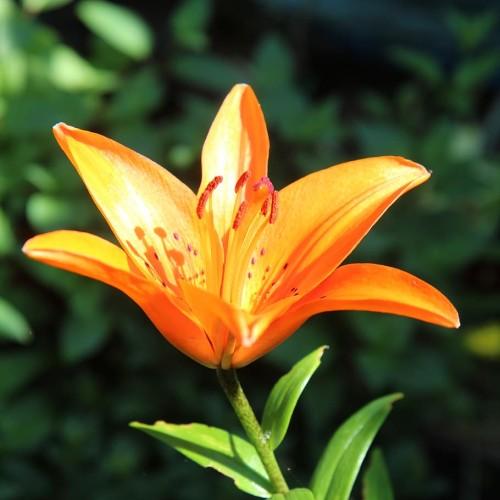
trumpet lily
Lilium 'Thunderbolt'
Cycle:
Perennial
Watering:
Average
Hardiness Zone:
4 - 9
Flowers:
Flowers
Sun:
Full sun,part shade
Leaf:
Yes
Growth Rate:
High
Maintenance:
Low
Drought Tolerant:
Yes
Care Level:
Medium
watering
Water the trumpet lily (Lilium 'Thunderbolt') deeply and consistently throughout the growing season. Generally, water the lily every 5-7 days, thoroughly saturating the soil and allowing the water to run off. After the soil is wet, stop watering to prevent water-logging and root rot. Older plants that are established and have several growing seasons of growth done can tolerate longer periods between watering. Monitor soil moisture levels and switch to a deeper watering schedule (once every 7-10 days) once more established. During the warmest weather, water the lily deeply every 5-7 days if possible.
sunlight
Trumpet Lilies require full, direct sunlight in order to bloom and thrive. They should receive 6-8 hours of direct sunlight every day, with the hours falling in the morning or afternoon, before the hottest part of the day. The sunlight should not be too intense, and should not be blocked by any structure or trees. It's best to provide morning sunlight, so the plant can absorb the sunlight at a milder temperature and make use of it more easily. When in full bloom, the lilies can take as much as 10 hours of direct sunlight per day.
pruning
Trumpet lilies (Lilium 'Thunderbolt') should be pruned in early spring when the dormant buds appear. However, pruning should be kept to a minimum, as too much can cause damage to the plant. Generally speaking, only dead, damaged, or decaying foliage should be removed. No more than a third of the stem should be cut away as this can lead to weaker shoots and a decrease in the flowering potential. Furthermore, care should be taken not to damage its new growth, as this will likely cause harm to the plant.
